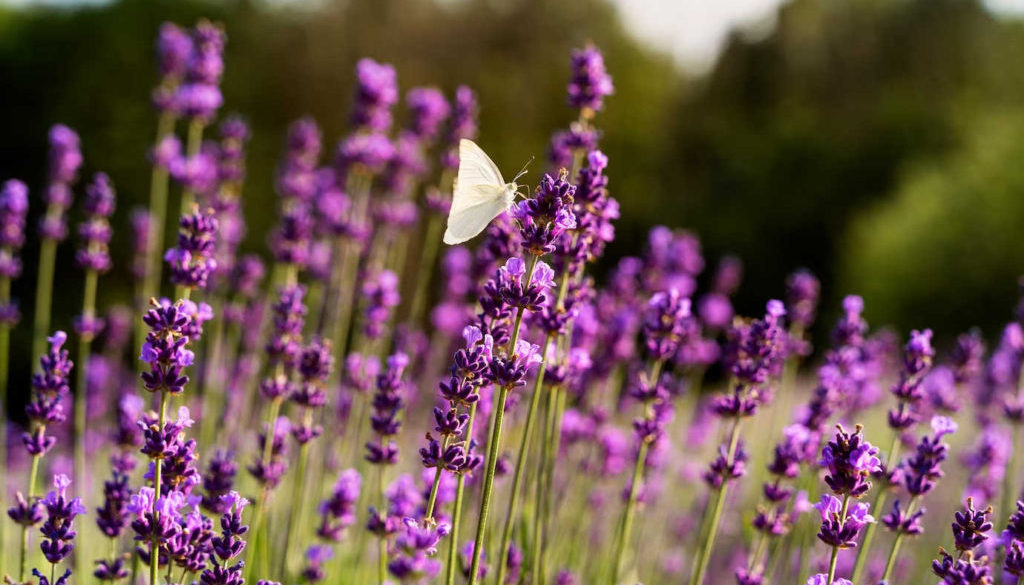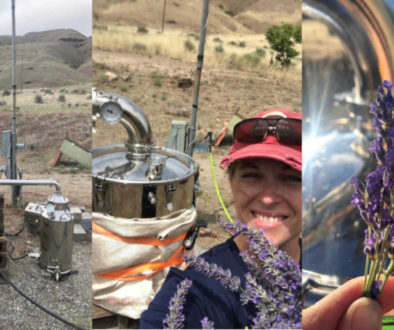Unlock the Secrets of English Lavender: Buena Vista (Lavandula Angustifolia)
Introduction To Buena Vista English Lavender
Imagine a garden filled with the enchanting fragrance and vibrant colors of English Lavender (Lavandula angustifolia), as you elevate your outdoor space into a calming oasis.
Among the various lavender cultivars, Buena Vista English Lavender stands out for its exceptional beauty, delightful aroma, and versatility in usage.
This blog post will guide you through the benefits of growing this captivating plant in your own garden and provide essential tips to ensure it thrives spectacularly.
Key Takeaways
- Buena Vista English Lavender is a versatile and beautiful herb that offers numerous benefits to gardeners, from its stunning bi-colored flower spikes to its medicinal and culinary uses.
- Growing Lavender can attract pollinators like bees, butterflies, and hummingbirds, supporting local ecosystems while promoting biodiversity.
- To ensure the optimal growth of your Buena Vista English Lavender plant in your garden, it’s essential to provide ideal growing conditions such as full sun exposure with well-drained soil while watering sparingly; prune regularly for compactness; and fertilizer is not recommended.
- Other various English Lavender cultivars are available such as ‘Hidcote Blue,’ ‘Munstead,’ and ‘Royal Velvet,’ each has unique characteristics suitable for different landscaping designs or aromatherapy uses.
Benefits Of Growing Buena Vista English Lavender
Growing Buena Vista English Lavender in your garden not only adds visual appeal, but it also has numerous benefits such as its beautiful and fragrant blooms, medicinal and culinary uses, and the ability to attract pollinators.
Beautiful And Fragrant Blooms
The beauty of the Buena Vista English Lavender lies in its captivating, bi-colored flower spikes that bloom not just once, but twice per season. In some locations three or even four bloom events in a season are not unheard of. These stunning blooms create a visually striking display in gardens, adding a touch of midsummer color and elegance to any landscape.
Aside from being pleasing to the eye and nose, these fragrant blooms can be used for various purposes – both practical and decorative. For example, lavender flowers are often used as components in potpourris, sachets or even incorporated into floral arrangements due to their charming appearance and delightful scent. Buena Vista Lavender is most suited for small floral arrangements as the stem length is typically about 10”-12” on average.
Buena Vista Lavender along with several other cultivars like Pacific Blue Lavender, Royal Velvet Lavender, and Folgate Lavender are commercially planted in the United States specifically for harvesting these enchanting blossoms.
Medicinal And Culinary Uses
Buena Vista English Lavender is not only a beautiful addition to your garden but also has a wide range of medicinal and culinary uses. The plant contains essential oils that have calming properties, making it ideal for treating anxiety, depression, and insomnia.
The oil can be used in aromatherapy by adding a few drops to diffusers or burning candles.
In culinary applications, Buena Vista English Lavender can add a delightful flavor to sweet dishes such as ice cream, cakes, and even cocktails. It’s also great with savory dishes like roasted meat or vegetables when used sparingly.
This herb is known for its ability to enhance the aroma and taste of food while providing health benefits thanks to its high antioxidant content.
Attracts Pollinators
Buena Vista English Lavender is a fantastic choice for gardeners looking to attract pollinators. Bees, butterflies, and hummingbirds are all drawn to the fragrant blooms of this lavender cultivar.
By adding Buena Vista to your garden, you can help support local ecosystems and promote biodiversity.
Lavender’s importance as a pollen source has been recognized since ancient times when its essential oils were prized for their medicinal properties. Today, studies have shown that planting lavender in gardens can increase bee populations and improve crop yields nearby.
How To Grow And Care For Buena Vista English Lavender
To grow Buena Vista English Lavender, plant it in well-draining soil in a sunny location, and water it sparingly; prune the plant regularly to ensure compactness.
Ideal Growing Conditions
Buena Vista English Lavender thrives in full sun and well-drained soil. It prefers a neutral to alkaline pH level, making it perfect for rock gardens and perennial borders.
Lavender grows best in areas with low humidity, which makes the Buena Vista cultivar ideal for coastal regions. Buena Vista also grows well commercially in high mountain desert conditions. When planting lavender, be sure to space them adequately so they have room to spread out as they grow. To form a hedge, a three foot spacing between plants is recommended.
Watering should be done sparingly, once or twice a week during dry spells, making sure not to overwater as lavender roots do not tolerate wet soil conditions well. Fertilizer is typically not necessary and will cause your plant to grow an overabundance of green growth, which will cause it turn woody in the center and split open prematurely.
Watering And Fertilizing Tips
Buena Vista English Lavender requires moderate watering and minimal to no fertilizing to thrive. Here are some tips to keep in mind:
- When watering, be sure to deeply water the soil around the base of the plant rather than spraying water on the foliage.
- Avoid overwatering, as lavender does not tolerate wet feet. Allow the soil to dry out between watering sessions.
- In terms of fertilizer, use a well – balanced organic fertilizer or till compost into the soil at planting time and then only once a year after that, if at all.
- Too much nitrogen in the soil can result in lush foliage but fewer blooms, so avoid fertilizers with high levels of nitrogen.
- Compost tea or fish emulsion are good natural fertilizer options for lavender plants.
- Mulching can help retain moisture in the soil and reduce weed growth while also providing nutrients as it decomposes.
By following these watering and fertilizing tips, you can ensure your Buena Vista English Lavender grows healthy and vibrant with beautiful blooms throughout the season.
Pruning And Harvesting Techniques
To keep your Buena Vista English Lavender healthy and looking its best, proper pruning is necessary. Here are some tips on how to do it:
- Prune annually: Regular pruning will help prevent woody growth and encourage new growth.
- Timing matters: Prune after flowering or in early spring before new growth appears.
- Cut back by one-third: Use sharp, clean shears to remove one-third of the plant’s height and width. This will keep the plant from becoming too leggy.
- Don’t cut into old wood: Avoid cutting into old wood as this can damage the plant and inhibit future growth.
As for harvesting lavender, here are some tips:
- Harvest early in the morning: This is when the oil content is highest in the plants.
- Choose buds wisely: Select buds that have just opened but haven’t fully flowered yet. For bouquets and dried buds, look for 25% of the flowers to have bloomed while the rest of the buds are not yet open.
- Cut stems correctly: Use sharp scissors or pruning shears to cut stems at ⅓ to ½ of their length, leaving enough foliage on the plant for continued growth throughout the season.
- Dry them out: Bind stems with a rubber band and hang harvested stems upside down in a cool, dry place with good air circulation and no direct sunlight for several weeks until they are completely dry before use in potpourri or other crafts.
With these tips, you’ll be able to successfully prune and harvest your Buena Vista English Lavender for years to come!
English Lavender Cultivars
Explore the different English Lavender cultivars, including ‘Hidcote Blue,’ ‘Munstead,’ and ‘Royal Velvet,’ each with their own unique characteristics and recommended uses in landscaping and aromatherapy.
Characteristics And Recommended Uses In Landscaping And Aromatherapy.
English Lavender offers versatile characteristics that cater to various uses in landscaping and aromatherapy. The table below provides information on these characteristics and their recommended applications.
|
Characteristics |
Recommended Uses in Landscaping |
Recommended Uses in Aromatherapy |
|
Beautiful and fragrant blooms |
– Plant as borders, garden paths, and hedges – Use in rock gardens and cottage gardens |
– Use in essential oil for relaxation and calming effects – Add to potpourri and sachets for a pleasant aroma |
|
Medicinal and culinary properties |
– Grow in herb gardens for easy access – Plant near vegetable gardens to deter pests |
– Use in herbal teas for relaxation and anxiety relief |
|
Attracts pollinators |
– Plant around fruit trees and vegetable gardens to encourage pollination – Create a pollinator-friendly garden with Buena Vista English Lavender |
N/A |
|
Easy to grow and care for |
– Ideal for beginner gardeners – Grow in pots or garden beds for versatility |
N/A |
|
Strongly bi-colored flower spikes |
– Use as a focal point in garden designs – Plant in groups for a stunning visual impact |
N/A |
Conclusion
In conclusion, Buena Vista English Lavender is a beautiful and fragrant herb that offers numerous benefits to gardeners. From attracting pollinators to its medicinal and culinary uses, there are many reasons to grow this versatile plant in your garden.
With the right care, it produces stunning blooms twice per season or more and can add color and serenity to any garden bed or container. Whether you’re looking for midsummer color or want to create an herb garden with calming properties, Buena Vista English Lavender is definitely worth considering.
FAQs:
- What are the benefits of growing English lavender in my garden?
English lavender offers a range of benefits, including its lovely fragrance, beautiful blooms, and versatility in culinary, medicinal, and decorative uses. It can also attract beneficial pollinators to your garden.
- How do I care for my English lavender plant?
In order to care for your English lavender plant, you should ensure it has well-draining soil with plenty of sunlight exposure. Additionally, you should avoid overwatering or fertilizing your plant as this can lead to root rot or decreased flower production.
- Can I use English lavender in cooking or baking?
Yes! Many people enjoy using fresh or dried English lavender buds in a variety of dishes such as teas, desserts like cakes and custards, roasted meats and vegetables for a delicious herb-infused flavor.
- Are there different cultivars of English Lavender that I can grow in my garden?
Yes! There are several cultivars within the Lamiaceae family which differ slightly from size attributes but maintain all other characteristics mentioned throughout this article (e.g., dark-purple flowers & aromatic properties). Choose one that will best suit your space requirements & desired aesthetic results!
General Facts
- Buena Vista English Lavender blooms twice per season with superb fragrance and eye-catching, strongly bi-colored flower spikes.
- English Lavender, with its aromatic leaves and sweetly fragrant flower spikes, is often considered an herb.
- Lavender requires lots of sun and good drainage; it proliferates in the English climate.
- Lavandula angustifolia ‘Buena Vista’ is commercially planted for harvesting.
- Lavender is a beautiful herb that invokes feelings of serenity and calmness.
- Lavender is grown for its beauty and fragrance and is very popular in gardens.
- Royal Velvet Lavender is a type of Lavandula angustifolia.
- Buena Vista Lavender plants and seeds are available for sale.
- Smaller lavender cultivars can be grown in pots.
- Lavender growing tips are available for those interested in cultivating this herb.
Source URLs
www.en.wikipedia.org/wiki/Lavandula_angustifolia
www.npgsweb.ars-grin.gov/gringlobal/taxon/taxonomydetail?id=21677
www.plants.sc.egov.usda.gov/home/plantProfile?symbol=LAAN81
www.academic.oup.com/ijnp/article/17/6/859/691858?login=false
www.highcountrygardens.com/perennial-plants/lavender/lavandula-angustifolia-buena-vista
www.thespruce.com/english-lavender-plants-2130856
www.almanac.com/plant/lavender
www.missouribotanicalgarden.org/PlantFinder/PlantFinderDetails.aspx?taxonid=255545&isprofile=0&
www.wineandcountrylife.com/growing-lavender-in-virginia-the-lavender-abbey-of-provence/
www.walkerland.ca/the-healing-garden-growing-lavender-lavendula-officinalis/
www.nature-and-garden.com/gardening/english-lavender.html


